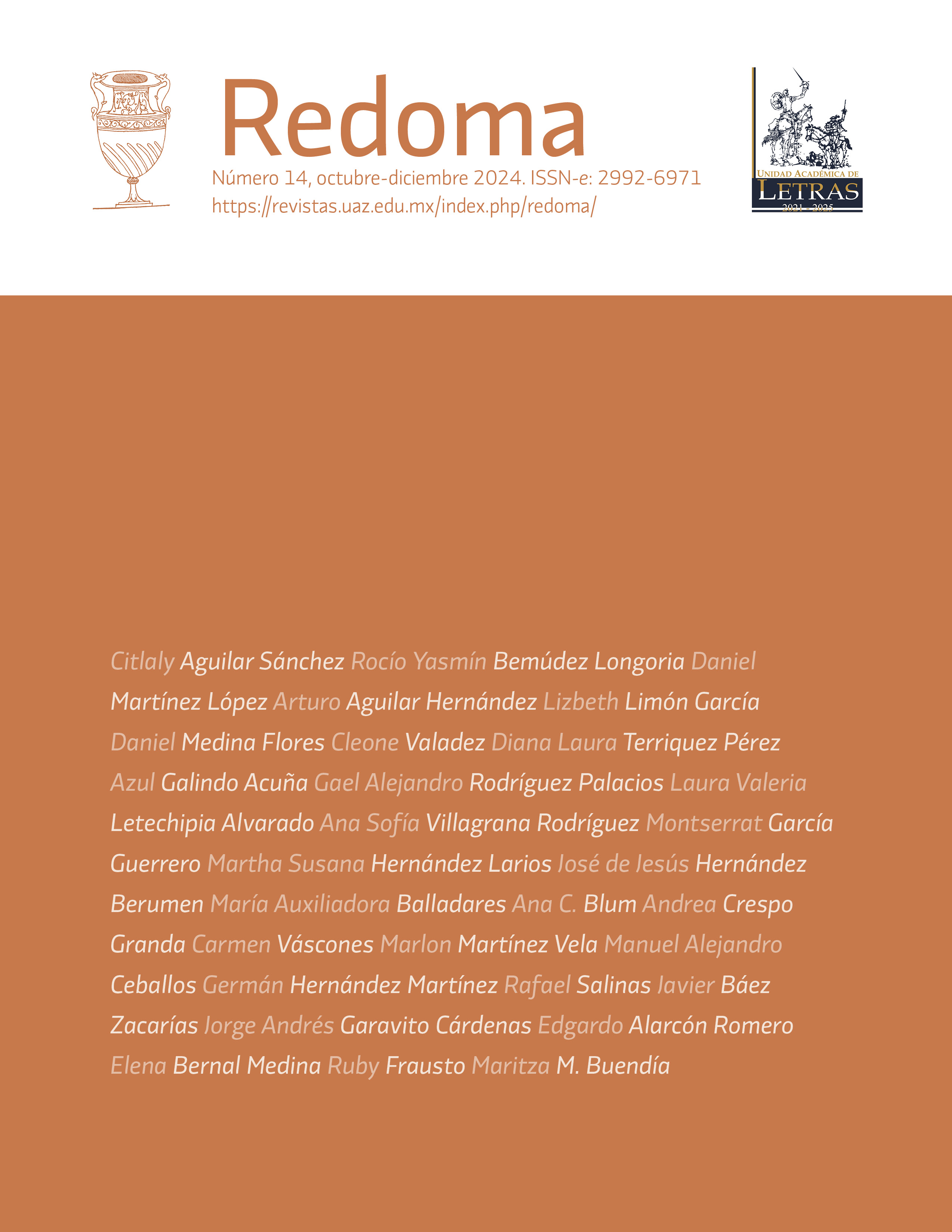Publicado 2024-10-01
Palabras clave
- Prácticas Educativas Abiertas,
- Recursos Educativos Abiertos,
- Educación Inclusiva,
- Experiencias de éxito
Cómo citar
Resumen
El proyecto del que parte el presente trabajo busca usar el concepto de comunidad en dos sentidos, el primero creación de una comunidad de REAs en el Repositorio Institucional y en segundo lugar, y como punto nodal, formar una comunidad de profesores que usen y creen este tipo de recursos para procesos de Educación Abierta. Se inició con un proceso de análisis de posibilidades de adecuación y uso para la institución y de mapeo de experiencias exitosas a nivel internacional y nacional. La metodología empleada es de análisis teórico del uso de Recursos Educativos Abiertos y de meta síntesis de experiencias exitosas para tomar como guía o ejemplo de trabajo. Se concluye que los REA pueden ser un elemento de apoyo para las prácticas de aprendizaje de la institución, tomando en cuenta la gobernanza, la producción audiovisual, el uso correcto de los materiales y la difusión de uso de estos recursos.
Descargas
Referencias
Arinto Patricia B., Hodgkinson-Williams Cheryl and Trotter Henry (2017). OER and OEP in the enHodgkinson-Williams, C. &Arinto, P. B. Global South: Implications and recommendations for social inclusion Adoption and impact of OER in the Global South. Cape Town & Ottawa: African Minds, International Development Research Centre & Research on Open Educational Resources. DOI: 10.5281/zenodo.1005330
Azevedo, F., Liu, M., Pennington, C.R. et al. Towards a culture of open scholarship: the role of pedagogical communities. BMC Res Notes 15, 75 (2022). https://doi.org/10.1186/s13104-022-05944-1
Burgos, Vladimir (2018). “Vinculación de recursos en Sistema TEMOA”. REA de la Escuela de Humanidades y Educación. Disponible en: https://www.youtube.com/watch?v=sg2RZ-sRhRU
Carrillo-González Gloria M., Gómez-Ramírez Olga J. y Vargas-Rosero Elizabeth (2007). “La Metasíntesis: una Metodología de Investigación”. Rev. salud pública. 9 (4):609-617, 2007
Cox, G., Willmers, M. & Masuku B (2022) Sustainable open textbook models for social justice. Frontiers in Education. 7:881998. doi: 10.3389/feduc.2022.881998
Cox, G., Masuku, B. & Willmers, M. (2020). Open Textbooks and Social Justice: Open Educational Practices to Address Economic, Cultural and Political Injustice at the University of Cape Town. Journal of Interactive Media in Education, 2020(1): 2, pp. 1–10. Available at: https://jime.open.ac.uk/articles/10.5334/jime.556/
Durán C. G. and Ramírez C. M., (2021) "Integration of Open Educational Resources Using Semantic Platform," in IEEE Access, vol. 9, pp. 93079-93088, 2021, doi: 10.1109/ACCESS.2021.3092315.
Brahim H. Ben, Khribi M. K. and Jemni M. (2017), "Towards accessible open educational resources: Overview and challenges," 2017 6th International Conference on Information and Communication Technology and Accessibility (ICTA), 2017, pp. 1-6, doi: 10.1109/ICTA.2017.8336068.
GhoshehWahbeh, D.M., Shweiki, S.N., Sartawi, A.F. (2022). The Role of an Instructional Design Model Integrated with OERS in Developing Teachers’ Competencies to Adopt E-Learning. In: Burgos, D., Affouneh, S. (eds) Radical Solutions in Palestinian Higher Education. Lecture Notes in Educational Technology. Springer, Singapore. https://0-doi-org.biblioteca-ils.tec.mx/10.1007/978-981-19-0101-0_9
Hendricks, C., Reinsberg, S. A., & Rieger, G. W. (2017). The adoption of an open textbook in a large physics course: An analysis of cost, outcomes, use, and perceptions. The International Review of Research in Open and Distributed Learning. https://doi.org/10.19173/irrodl.v18i4.3006
Herrera-Cubides, J.F., Gaona-García, P.A., Montenegro-Marín, C.E. et al. Improving OER descriptions to enhance their availability, reuse, and enrichment. Educ Inf Technol 27, 1811–1839 (2022). https://0-doi-org.biblioteca-ils.tec.mx/10.1007/s10639-021-10641-w
Hilton John III (2019). Open educational resources, student eficacy, and user perceptions: a synthesis of research published between 2015 and 2018. Education Tech Research Dev (2020) 68:853–876 https://doi.org/10.1007/s11423-019-09700-4
Hosman, L., Gómez Zermeño, M. G., & Alemán de la Garza, L. (2020). SolarSPELL Assessment: Impact of a Solar-Powered Digital Library as a Teaching-Learning Resource on Climate Change. Sustainability, 12(16), 6636. doi:10.3390/su12166636. Recuperado en:www.mdpi.com/2071-1050/12/16/6636
Hunsicker-Walburn, M., Guyot, W., Meier, R., Beavers, L., Stainbrook, M., &Schneweis, M. (2018). Students’ perceptions of OER quality. Economics & Business Journal: Inquiries & Perspectives, 9(1), 42–55.
Jasso Zermeño, Juan David (2021) “Aminoración de la brecha educacional ydigital en México mediante la creación de REA en Españolpara la Biblioteca Digital SolarSPELL”, Tesis para obtener el grado de Maestro en Tecnología Educativa, ITESM, Disponible en: https://3.136.149.202/handle/11285/642802
Kinch-Pedrosa, Leigh, (2021). Could Pressbooks support ebook creation for deaf education?. Disponible en: https://pressbooks.com/accessibility/could-pressbooks-support-ebook-creation-for-deaf-education/
Koseoglu Suzan & Bozkurt Aras (2018) An exploratory literature review on open educational practices, Distance Education, 39:4, 441-461, DOI: 10.1080/01587919.2018.1520042
Marín, V.I., Zawacki-Richter, O., Aydin, C.H. et al. Faculty perceptions, awareness and use of open educational resources for teaching and learning in higher education: a cross-comparative analysis. RPTEL 17, 11 (2022). https://doi.org/10.1186/s41039-022-00185-z
Nascimbeni Fabio, Daniel Burgos, Lorna M. Campbell & Anita Tabacco (2018) Institutional mapping of open educational practices beyond use of Open Educational Resources, Distance Education, 39:4, 511-527, DOI: 10.1080/01587919.2018.1520040
OrwenjoD. O., &ErastusF. K. (2021). Teachers’ Perceptions of Open Educational Resources: The Case of Open Resources for English Language Teaching (ORELT) in Kenya. Journal of Learning for Development , 8(3), 582-600. Retrieved from https://jl4d.org/index.php/ejl4d/article/view/529
Pérez Santiago, Rosalba; Ramírez Susana; Mortera Gutiérrez, Fernando (2011). “TEMOA un Catálogo de Recursos Educativos Abiertos para Ambientes Virtuales: Iniciativa en uso del Tecnológico de Monterrey” Ponencia en XII Encuentro Internacional Virtual Educa. Disponible en: https://repositorio.tec.mx/bitstream/handle/11285/636815/temoa.pdf?sequence=1
Stracke, C. M., Downes, S., Conole, G., Burgos, D., & Nascimbeni, F. (2019). Are MOOCs Open Educational Resources? A literature review on history, definitions and typologies of OER and MOOCs. Open Praxis, 11(4), 331–341. DOI: http://doi.org/10.5944/openpraxis.11.4.1010
Truong, V., Denison , T., & Stracke, C. M. (2021). Developing Institutional Open Educational Resource Repositories in Vietnam: Opportunities and Challenges. The International Review of Research in Open and Distributed Learning, 22(4), 109-124. https://doi.org/10.19173/irrodl.v23i1.5582
Trust Torrey, Maloy Robert W, Edwards Sharon (2022) College student engagement in OER design projects: Impacts on attitudes, motivation, and learning. Active Learning in Higher Education 1–19https://0-doi-org.biblioteca-ils.tec.mx/10.1177/14697874221081454
Wiley, D., & Hilton III, J. L. (2018). Defining OER-Enabled Pedagogy. The International Review of Research in Open and Distributed Learning, 19(4). https://doi.org/10.19173/irrodl.v19i4.3601


